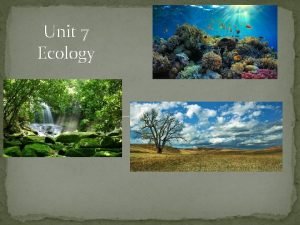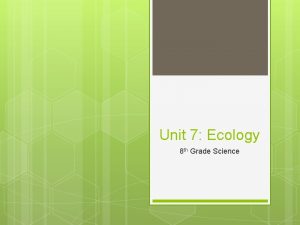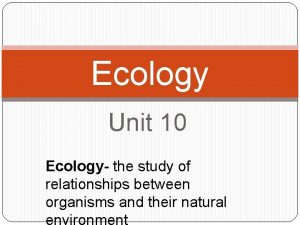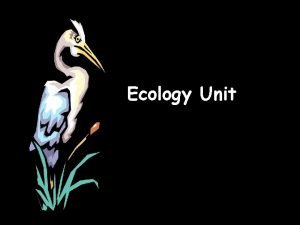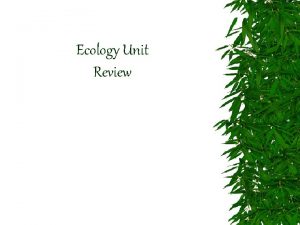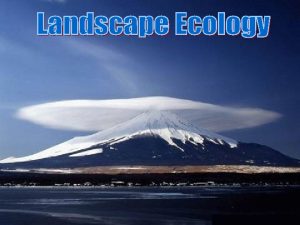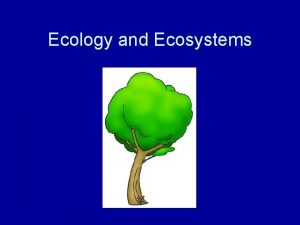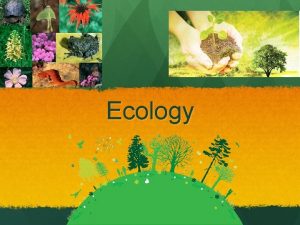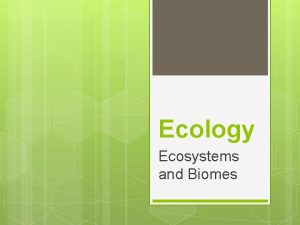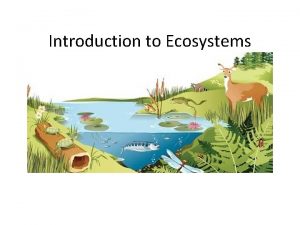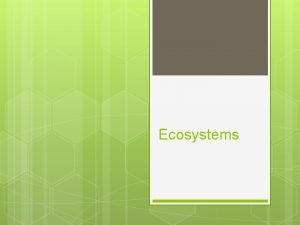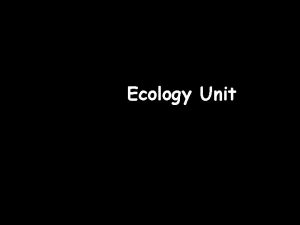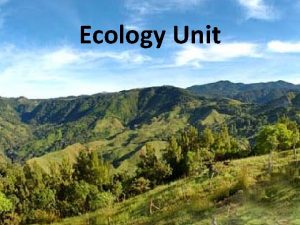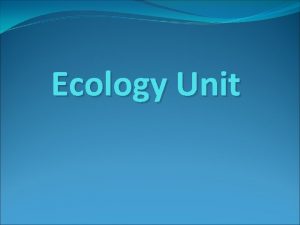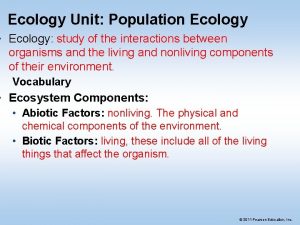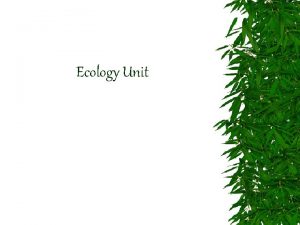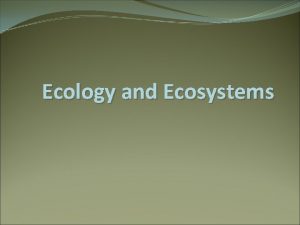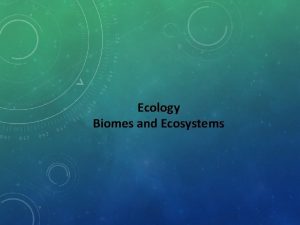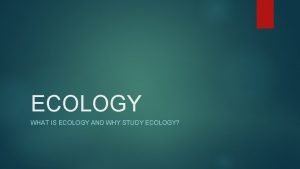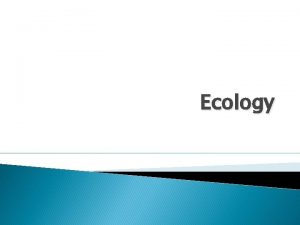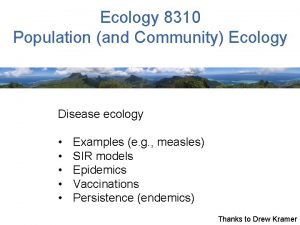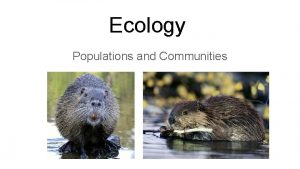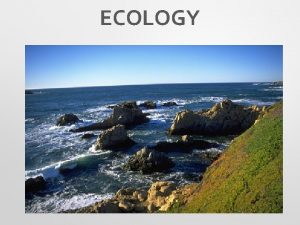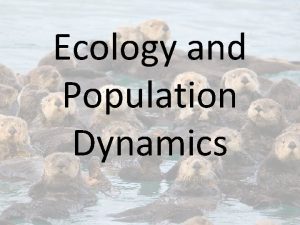Unit Ecology Day 1 Ecosystems and Ecotones Ecosystems
























- Slides: 24

Unit: Ecology Day 1: Ecosystems and Ecotones

Ecosystems: What they are ○ Ecosystem○ Natural areas with common rainfall, temperature, flora and fauna ○ Self-sustaining systems

U. S. Has 6 Major Ecosystems 1. 2. 3. 4. 5. 6. Coasts/Oceans Farmland Forests Fresh waters Grass land/Shrub Land Urban/Suburban

Biotic Communities Plant community ○ ○ ○ Trees Shrubs Grasses Animal community ○ ○ ○ Mammals Birds Reptiles Microbial community ○ ○ ○ Fungi Bacteria Protists

Abiotic Factors ○ Non-Living ○ ○ ○ Amount of rain Temperature Salinity Elevation Type of soil Sunlight

Species A group of organisms that can reproduce and produce fertile offspring in their natural habitat One Individual

Population ○ The number of individuals that make up the interbreeding species in an area.

Community ○ All plants, animals, and microbes occupying an explicit unit of space and interacting with each other.

Ecotone ○ In passing from one ecosystem to another, there may be a transitional area that shares many of the species and characteristics of both ecosystems.


Examples of Ecotones ○ A group of interacting ecosystems. ○ ○ Coastal Wetlands Saltwater bay Salt Marsh Estuary

Biomes ○ Similar or related ecosystems grouped together to form major ecosystems or biomes ○ Ex: Tropical Rainforests


Categories of organisms ○ Producers Photosynthesize ○ Autotrophs ○ Chlorophyll ○ ○ ○ Ex: algae, grasses, Flowers, cacti, trees

Categories continued… ○ Consumers Eat Living things ○ Heterotrophs ○ ○ Examples: ○ ○ ○ ○ Protists Bacteria Worms Fish Birds Mammals Insects


Detritus feeders ○ ○ ○ Fungi Mushrooms Bacteria

Decomposers & Detritivores ○ Break down organic matter into recyclable materials ○ Examples: ○ ○ termites earthworms fungi bacteria

Consumer Pyramid ○ Primary consumer ○ ○ Secondary consumer ○ ○ ○ Herbivores Feed on primary consumers (carnivores) Omnivores ○ Feed on primary & secondary consumers

Predators, Parasites, Pathogens ○ Predator ○ ○ Parasite ○ ○ Organism that feeds on other organisms Organism (plant or animal) becomes intimately associated with their prey (host). Feed on prey usually without killing it. Pathogen ○ Usually microbes that cause disease

Trophic relationships & food webs Feeding levels

Know This!!!!!!!

Limits of Trophic Levels ○ ○ Biomass Total combined weight of all the organisms at each trophic level. Each level moving up loses 90% mass Biomass pyramid

Title • Text
 Day 1 day 2 day 3 day 4
Day 1 day 2 day 3 day 4 Phosphorus cycle pearson education
Phosphorus cycle pearson education Chapter 55 ecosystems and restoration ecology
Chapter 55 ecosystems and restoration ecology Day 1 day 2 day 817
Day 1 day 2 day 817 Cycle of carbon
Cycle of carbon Unit 7 ecology answer key
Unit 7 ecology answer key Which of the following tells you population density
Which of the following tells you population density Unit 10 ecology
Unit 10 ecology Ecology unit review
Ecology unit review Sulfur oxide
Sulfur oxide Romeo and juliet summary
Romeo and juliet summary Unit 10, unit 10 review tests, unit 10 general test
Unit 10, unit 10 review tests, unit 10 general test William beanes elementary school
William beanes elementary school Ocean the part day after day
Ocean the part day after day Day to day maintenance
Day to day maintenance As your room gets messier day by day, entropy is
As your room gets messier day by day, entropy is I don't know about tomorrow
I don't know about tomorrow Growing day by day
Growing day by day Define seed dormancy
Define seed dormancy Day by day seed germination observation chart
Day by day seed germination observation chart Geotropism
Geotropism I live for jesus day after day
I live for jesus day after day One day he's coming oh glorious day
One day he's coming oh glorious day Day one day one noodle ss2
Day one day one noodle ss2 Dayone dayone noodles ss2 小時光 肆號麵鋪
Dayone dayone noodles ss2 小時光 肆號麵鋪




